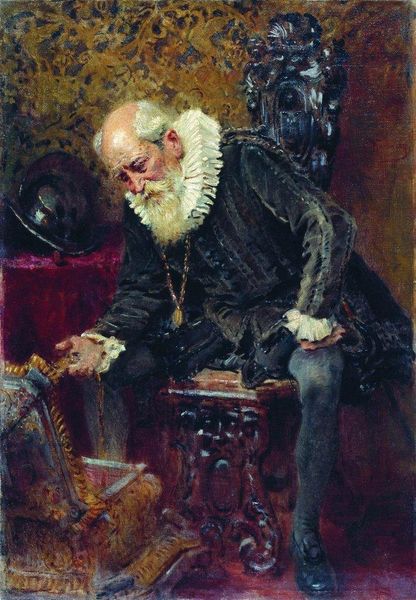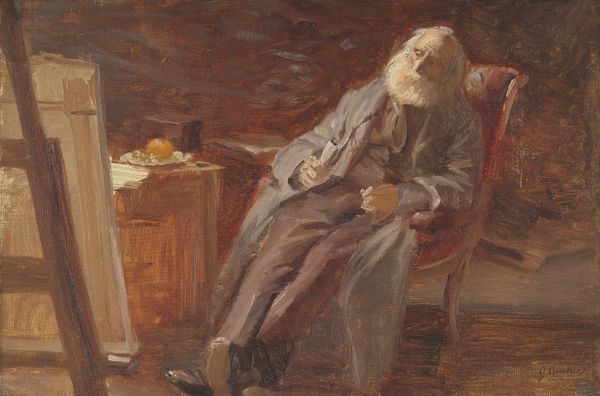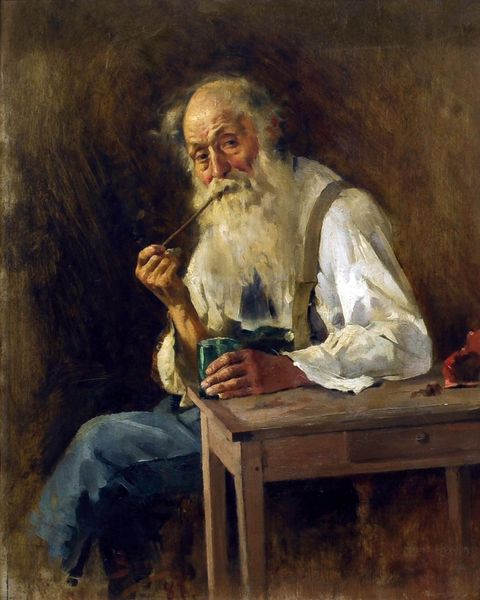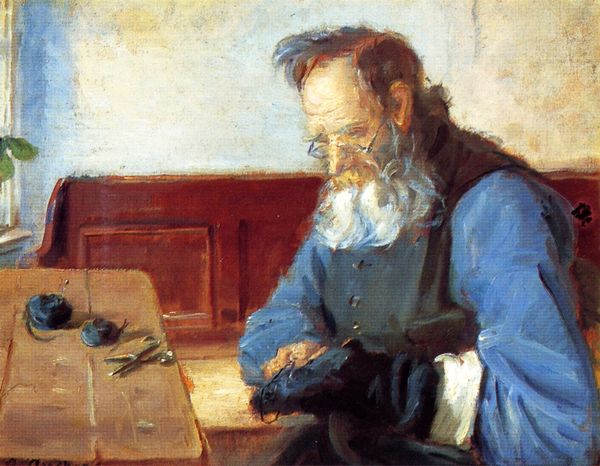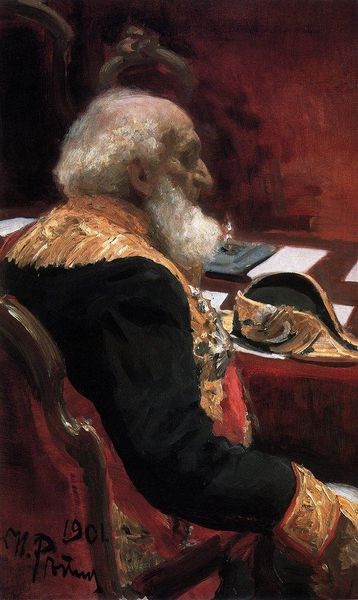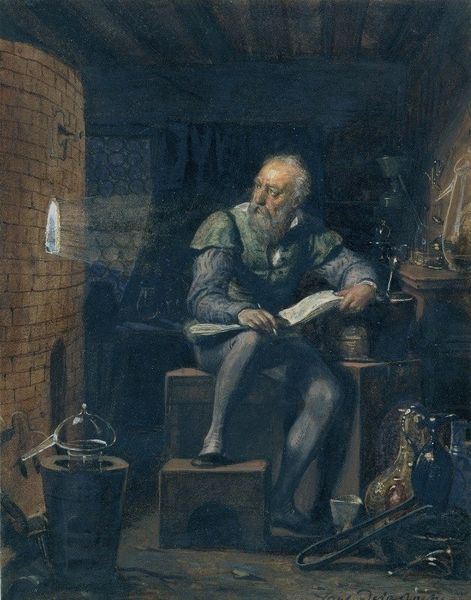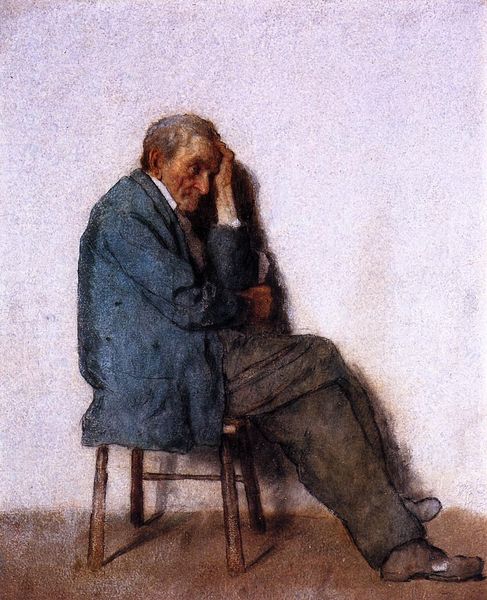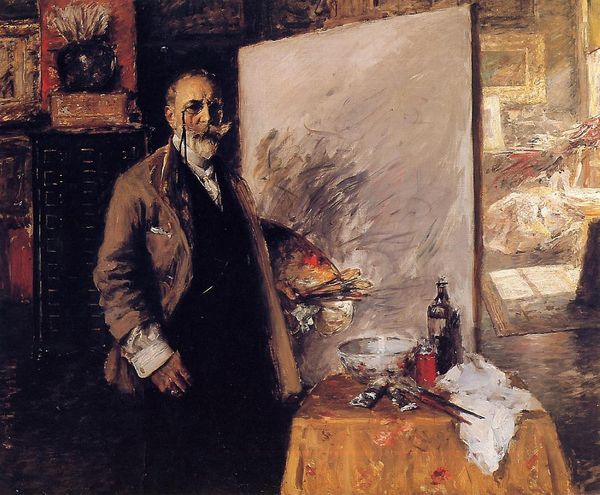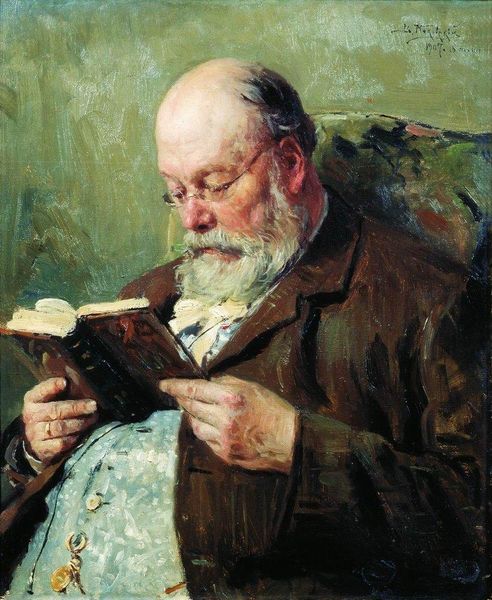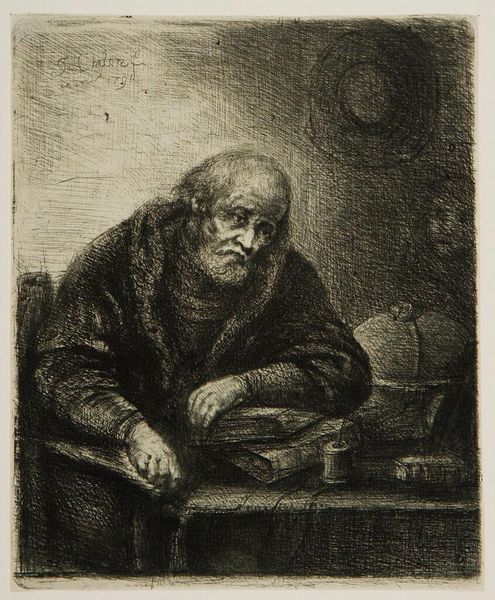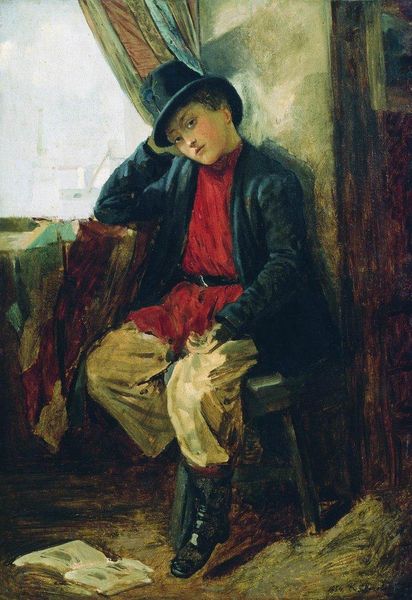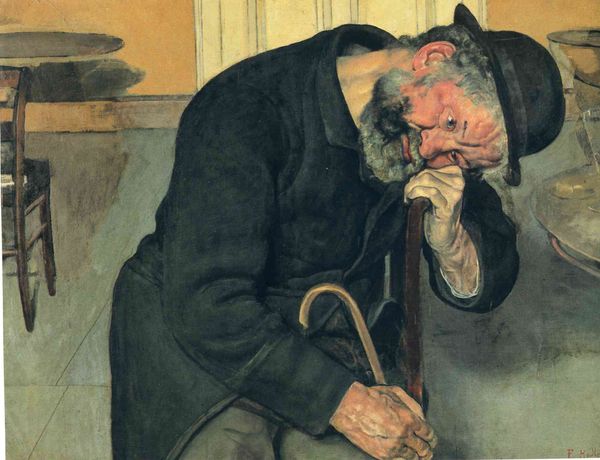
painting, oil-paint, impasto
#
portrait
#
painting
#
oil-paint
#
oil painting
#
impasto
#
russian-avant-garde
#
genre-painting
#
academic-art
#
portrait art
#
fine art portrait
#
realism
Copyright: Public domain
Curator: Welcome. Before us hangs Vladimir Makovsky’s 1893 oil painting, “At the porter's room.” Editor: It's quite evocative. There's an atmosphere of quiet contemplation. The floral background fights with the rectilinear tiles for dominance. Curator: Indeed. Let's consider the composition. Note the carefully constructed arrangement of forms—the central figure balanced by the table, the considered use of light to define planes and textures. Editor: Speaking of textures, look at how the impasto technique animates the fabric of his clothing, almost elevating a simple uniform. This is labor memorialized through careful representation of its materiality. One could almost touch the coarseness. Curator: Yes, Makovsky has successfully employed impasto here. From a formal perspective, observe how this technique accentuates the distinction between foreground and background. Note how the contrast in brushwork establishes planes in an otherwise domestic space. Editor: It also creates a certain psychological distance. While clearly present and solid, our subject seems far away in his mind, or in memory. What could a man in this social position be reflecting on in Tsarist Russia? What social dynamics might a simple portrait like this hide? Curator: Precisely! And in concert, notice how the planes of cool grays and blues subtly juxtapose the muted vibrancy in the ornate background—it is quite striking. Editor: That background—it reads almost as an extension of the figure’s internal state, an outward projection of inner turmoil. Consider, also, that a portrait, such as this one, offered relative access to the upper classes, who, in this era, become important patrons. Curator: Intriguing, yes. Overall, I find Makovsky’s command of structure in conveying emotion to be quite affecting in this representational work. Editor: I am intrigued by how Makovsky renders the subject’s physical being through visible brushstrokes to capture an individual caught within the material conditions of his era. Thank you.
Comments
No comments
Be the first to comment and join the conversation on the ultimate creative platform.
